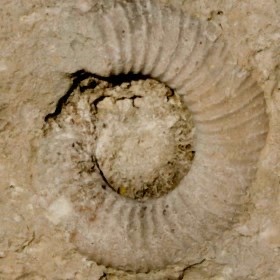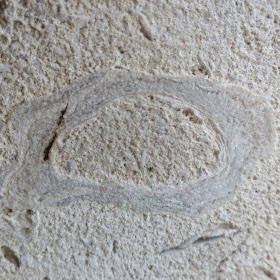Permission to place this cache was given by Maria Green, Recreation & Leisure Officer, Westmorland & Furness Council
The Barrow Park Cenotaph is the main war memorial in Barrow in Furness. Located in the towns public park, the structure is made from Portland Stone and is pillar like in appearance. It was built in 1919 in commemoration of the 616 Barrovian men who lost their lives in combat during World War I, however since then the names of 274 more locals have been added (268 of these being fatalities of World War II and 6 of the Korean War. The cenotaph currently only bears the names of Barrovians lost during these three wars whilst in military action (i.e. excluding civilians killed in the Barrow Blitz). Two inscriptions on the memorial read, To the glory of God and in honoured memory of the men of Barrow-in-Furness who fell in the Great War and in honoured memory of all service personnel who gave their lives in the 1939–1945 War. Also Korea and Cyprus campaigns having made the supreme sacrifice that we might live lest we forget.

Portland stone is a sedimentary rock formed in shallow, tropical seas during the Tithonian stage of the Jurassic period, roughly 150 million years ago, and is quarried on the Isle of Portland, Dorset. The quarries consist of beds of white-grey limestone separated by chert beds. It has been used extensively as a building stone throughout the British Isles and notably in major public buildings in London such as St Paul's Cathedral and Buckingham Palace.
The name Portland Stone refers to a family of closely related limestone variants with differing characteristics rather than a single, uniform rock type. In some types of Portland stone fossilised sea creatures are abundant while in other types fossils are virtually non-existent.
Portland Freestone is an oolitic limestone with variable shell content. To really appreciate the individual ooids they are best viewed through a hand lens or under some other form of magnfication, although if your eyesight is exceptionally good you might be able to make them out with the naked eye.
The Freestone Member
A freestone is a fine grained stone, typically sandstone or limestone, which can be cut easily in any direction without shattering or splitting, properties which make them particulary suitable for building and for carving.
The Portland Freestone Member forms the upper part of the Portland Limestone Formation and comprises four distinct beds, three of which are extensively used for these purposes:
Roach

The uppermost bed of the Portland Freestone Member is known as Portland Roach. This bed represents a shelly beach dominated by shell fossils. Many of the shells, being formed of aragonite, have been dissolved away by acidic groundwater, leaving behind an empty mould or cast of the shell which was once there.
Whitbed

The fossil content in Portland Whitbed can vary quite considerably, being described as shelly at one end of that spectrum and clean when shells are sparse. Fossil rich varieties tend to be heavy in calcite fossils such as shells of oysters and other bivalves as well as patches of the distinctive reef building alga Solenopora Portlandica.
Basebed

The Basebed is often considered to be the finest quality Portland Stone available.
Typically Basebed has a very clean, homogeneous texture with a negligible shell content making it eminently suitable for carving fine detail in deep relief. It is not quite as durable in exposed locations as Whitbed but makes an unbeatable monumental and carving stone for use on very many prestigious building projects.
Fossils
Fossils are any preserved remains, impression, or trace of any once-living thing from a past geological age. Examples include bones, shells, exoskeletons, stone imprints of animals, hair and petrified wood.
Fossils are found almost exclusively in sedimentary rocks because the sediments are laid down in such a way that they preserve the living organism's remains, or a cast or mould of its shape during lithification (the process of becoming rock).
Gastropods - Aptyxiella portlandica - found almost exclusively in the roach and commonly known as portland screws because their spirals make them look a bit like screw threads. The shells of this particular gastropod were made of aragonite. Aragonite usually reverts back to calcite, the more stable polymorph of calcium carbonate, during the fossilisation process, unless lithification occurs relatively quickly in which case there is insufficient time to allow the conversion to take place and the aragonite remains in the rock.

Cephalopods - Ammonites - just about the easiest fossilised sea creature to recognise thanks to their coiled shells. Many Ammonite fossils reveal the inner structure of the shell with its multiple chambers separated by walls known as septa with complicated frilled edges which scientists use to identify which particular type of ammonite they are looking at. The image to the right shows an external view of an ammonite fossil, displaying the numerous ridges on the shell, perpendicular to the shell walls.

Bivalves - Liostrea expansa - is a thick-shelled oyster of medium size that grew in a somewhat cup-shaped form. Although unremarkable in appearance, this oyster is quite striking in the Portland Freestone because, like other oysters, it has a shell of bluish calcite which has survived unaltered due to its robust construction of numerous fine calcite layers.
The image to the right shows a cross section through an oyster shell but large collections of shell fragments are quite common in the Whitbed, as shown in the Whitbed example further up this page and in the image at the top of the page.

Corals. Corals are solitary or colonial types with bilateral symmetry. They have a hollow in the top surface (calice) in which the polyp sits, together with numerous tabulae, septa (the major ones being arranged in groups of four), dissepiments and, in some, a central calcareous rod (columella).

Please use the below picture, to aid you in completing his EarthCache, and also for you to specifically look at the correct location.

Logging Requirements (Questions to Answer)
In order to log a find against this EarthCache, you will need to visit GZ and make some observations and then answer some questions and send answers to me via my Geocaching profile or through the Messenger Centre.
You won't need a magnifying glass or anything like that to complete the earthcache but if you have one, or ideally a hand lens or even a magnifying app on your smartphone, you'll be able to see the makeup of the rock and any fossils it includes in much greater detail.
Take a look at the stone the memorial is made of, in particular any visible fossils.
1. Identity the fossil you see behind the blue circle next to the PRO PATRIA plaque. What is it's shape and size.
2. Identity the fossil you see behind the red circle above the LIBERTY plaque. What is it's shape and size.
3. Using the information you have gained from tasks 1 & 2. Which bed was the stone formed in?
4. What stage of the Jurassic period was the stone formed
5. Name a puplic building in London built with Portland Stone
6. Now turn your attention to the paving stones on the ground around the monument, which fossil can you see in abundance.
We always like to see photographs of you and/or your GPS device at gz, plus this also provides additional proof of your visit, so please include one with your log.
***** PLEASE NOTE IMPORTANT *****
CACHES ARE NOT ALLOWED TO BE PLACED ON ACTUAL MEMORIALS OR WITHIN THE BOUNDARY OF SUCH
AT ALL TIMES PLEASE TREAT LOCATIONS OF MEMORIALS WITH RESPECT